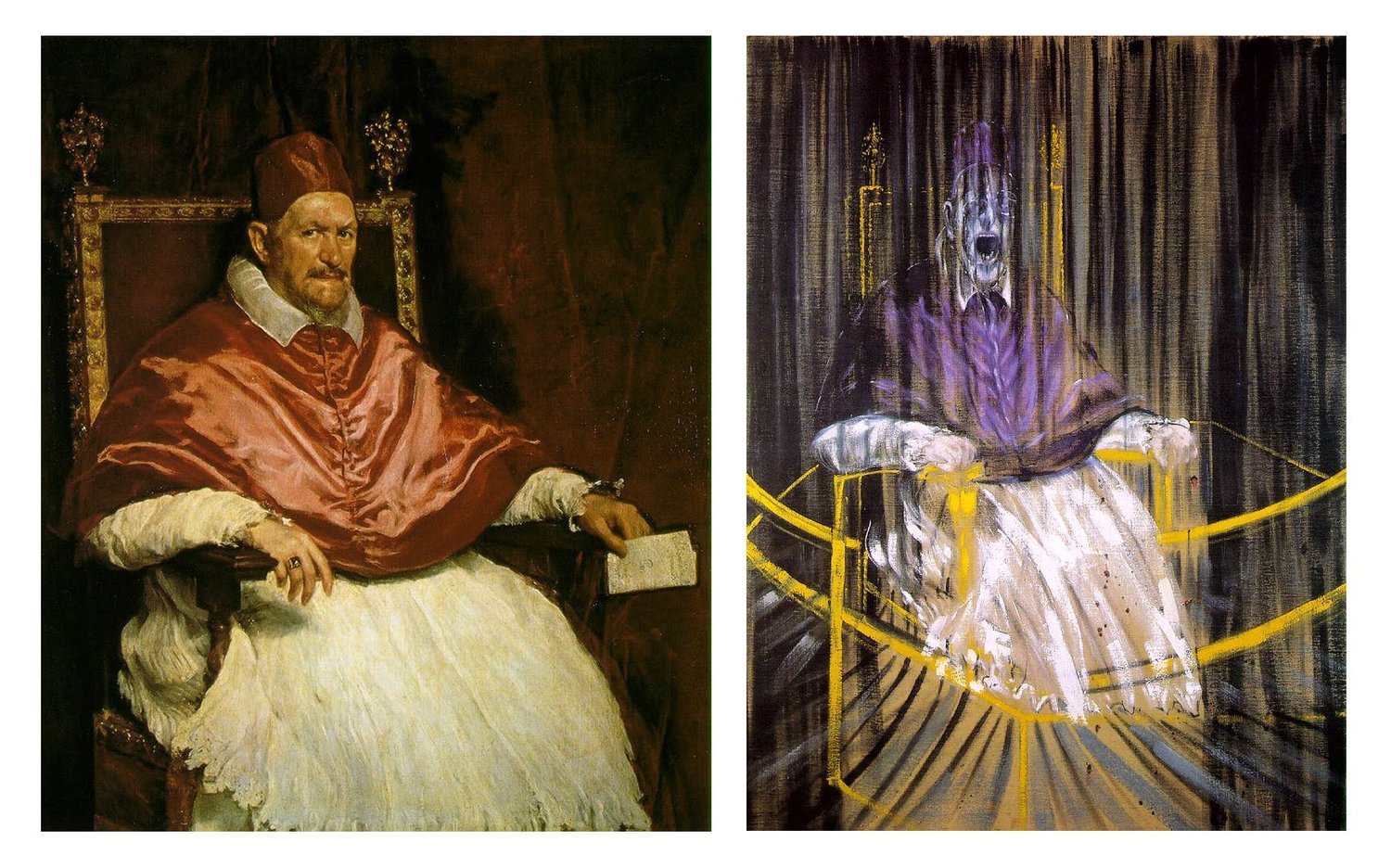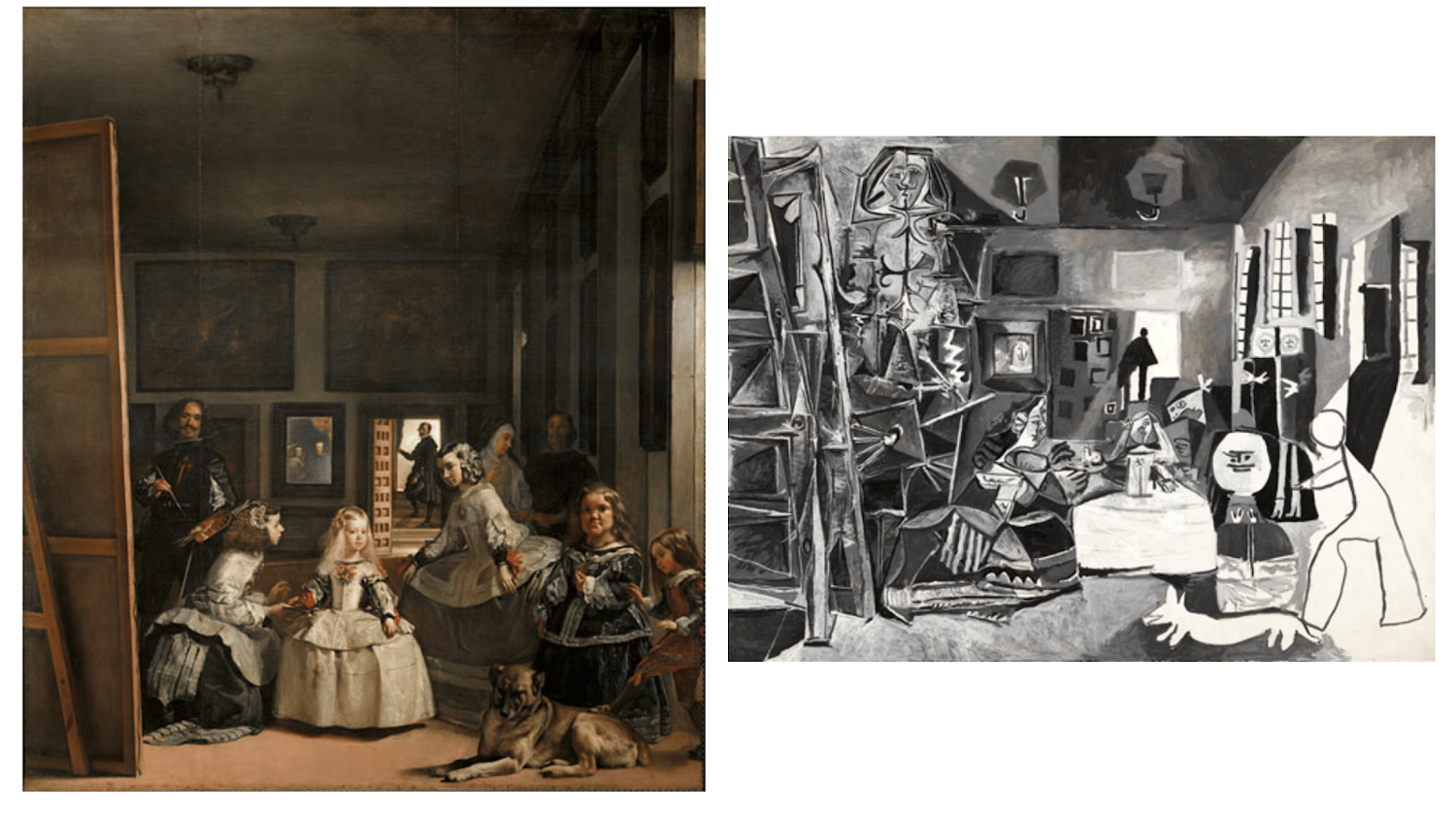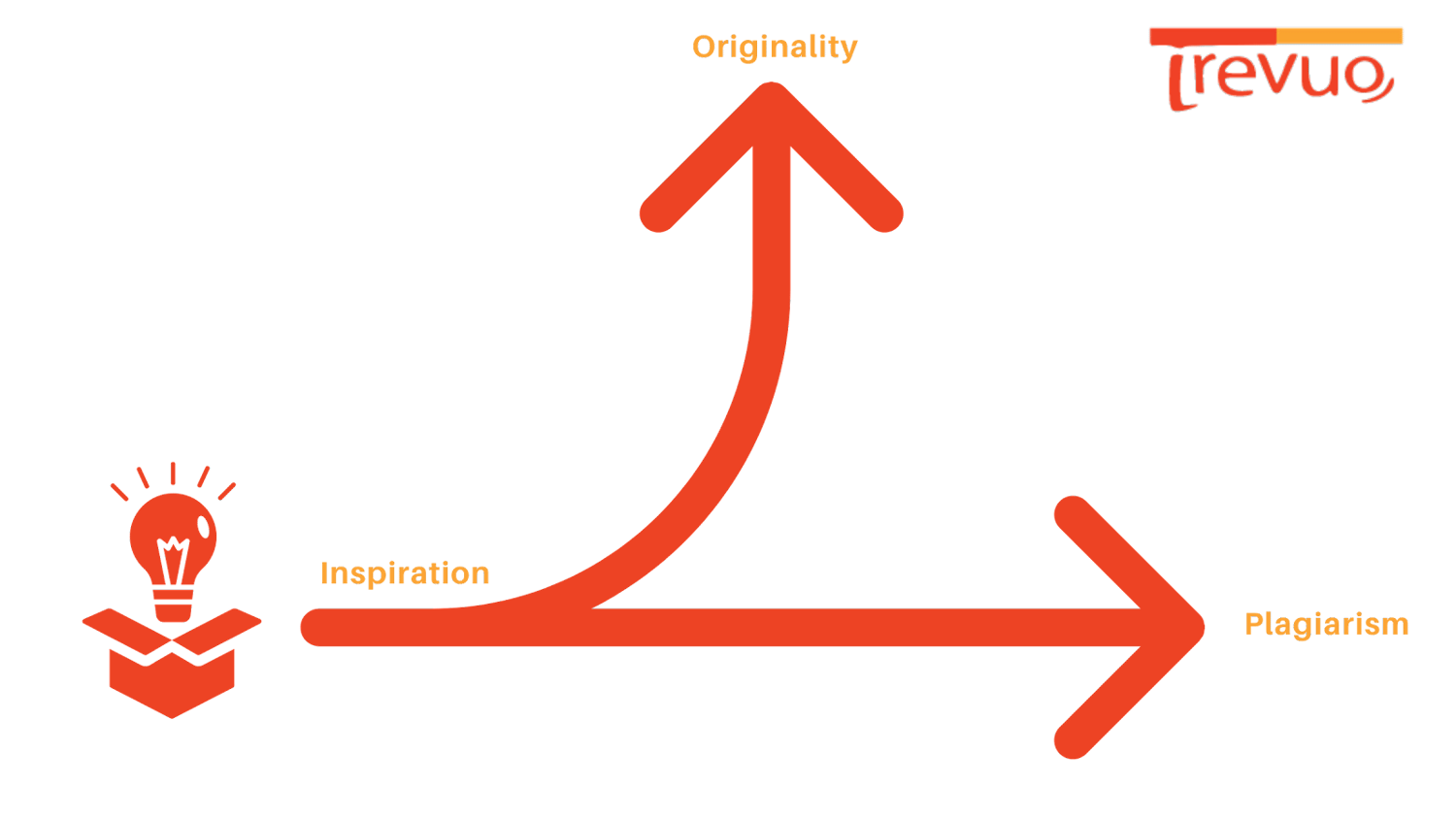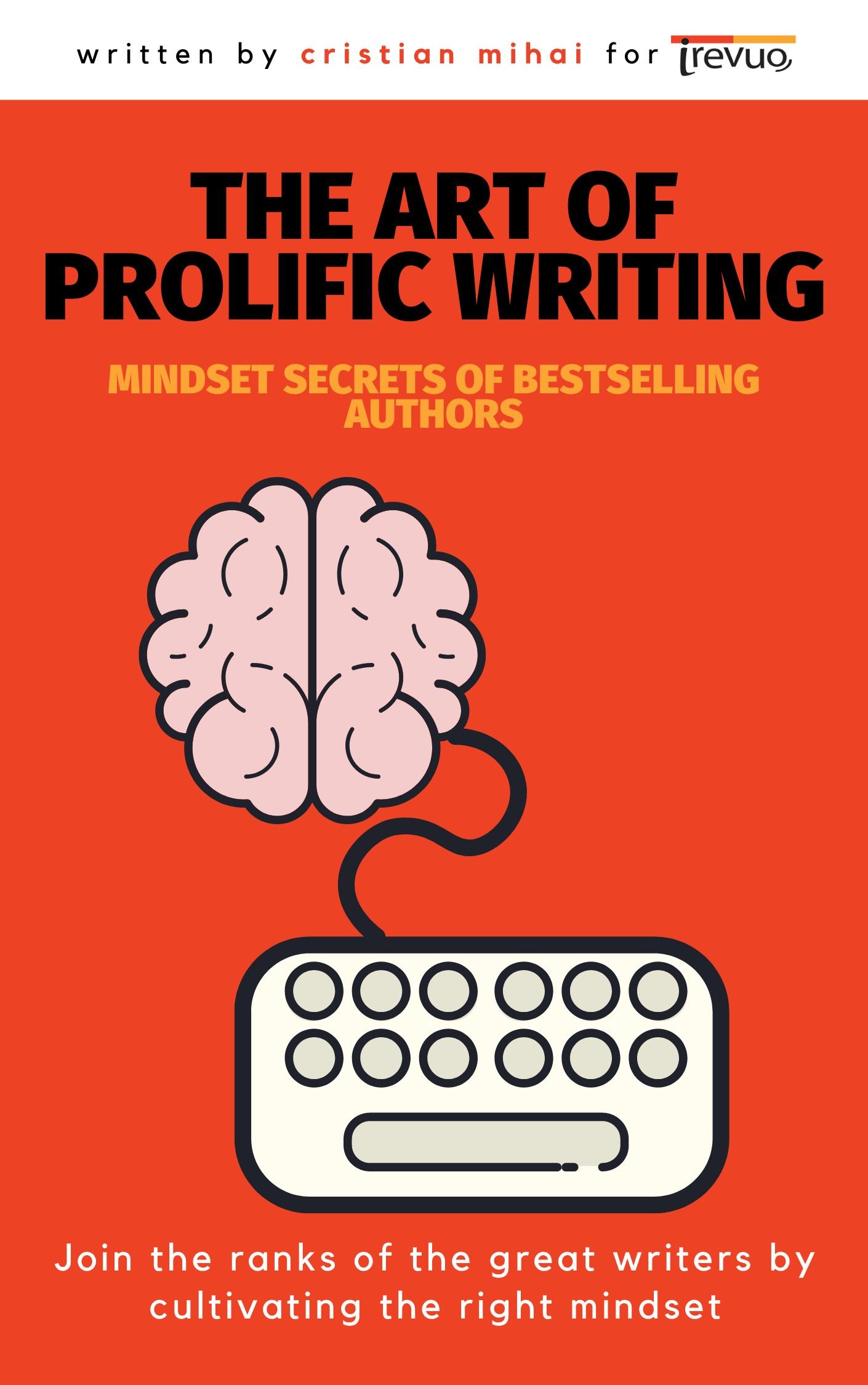In the year 1650, during the reign of Pope Innocent X, a peculiar pact was formed. The esteemed Spanish artist, Diego Velázquez, found himself summoned to the Vatican to undertake a weighty task: to capture the visage of the Pope himself upon the canvas. An artistic endeavor that would echo through the annals of time.
Fast forward through the labyrinth of history, traversing the centuries, until we arrive in the mid-twentieth century. Here we encounter an Irish artist by the name of Francis Bacon. Unbeknownst to him, he was destined to be entangled in a web spun by the hands of Velázquez.
Though Francis Bacon had never beheld Velázquez's masterpiece firsthand, he embarked upon an audacious quest. Driven by a relentless fascination, he resolved to replicate the papal portrait, not once or twice, but an astonishing tally of fifty times. The fervor of his creative spirit consumed the 1950s and 1960s, birthing a prolific series of paintings that stood as a testament to his enduring fixation.
Bacon, without the touch of Velázquez's brush gracing his eyes, relied solely on descriptions, photographs, and secondhand accounts to breathe life into his own renditions. Each stroke he applied, each hue he manipulated, represented an attempt to summon the essence of that distant papal presence. The image of Innocent X, infused with Bacon's distinctive aesthetic and tortured vision, would be reborn repeatedly under his hand.

The summer of 1957 unfolded like a sultry melody, an interlude pregnant with artistic revelation. In this symphony of creativity, the eminent Pablo Picasso found himself enveloped in a spell cast by the resplendent opus of Diego Velázquez, "Las Meninas."
Picasso, ever the restless innovator, stood at the precipice of his own oeuvre, poised to push the boundaries of artistic expression. And so, with the stroke of destiny's brush, he was beckoned into the embrace of Velázquez's masterpiece. The echoes of the seventeenth-century canvas whispered through time, stirring Picasso's imagination, kindling a flame that demanded his homage.

The genesis of my literary journey can be traced back to a novella entitled "An Emperor's Will." It was a piece of prose that materialized during my youthful years, when I was merely sixteen summers old. Little did I know that this humble creation would catapult me into the limelight, as it emerged victorious in a prestigious National Literary Contest. The accolades did not stop there, for it attracted the attention of esteemed published authors, who reveled in its essence. Even within the realm of an online workshop, frequented by the finest science fiction and fantasy writers in Romania, it garnered a chorus of positive acclaim.
Yet, within the bounds of this seemingly fortuitous achievement, an enigma loomed. "An Emperor's Will" bore an uncanny resemblance to the stylistic tapestry woven by the illustrious Gabriel Garcia Marquez. A dissonance emerged, for the shadow of influence appeared to permeate my work, its echoes reverberating in every line. It was a testament to my infatuation, an unbridled obsession with emulating the literary finesse of one of my revered literary masters.
This novella, you see, marked a turning point in my creative existence. It was the first instance where the words flowed ceaselessly from my mind onto the page. I succumbed to an insatiable compulsion, forsaking sleep and surrendering to the written word. The story consumed me, its tendrils entwining my thoughts, urging me to pour forth my ideas with relentless fervor.
For any aspiring writer, the quest for inspiration can prove to be an arduous endeavor. It is a delicate flame, at times elusive, leaving one to confront a blank canvas, plagued by inertia. Yet, in this pursuit, I discovered the power of imitation—a potent catalyst for creativity. Through the study and emulation of accomplished authors, I unearthed a profound understanding of the craft of writing. I ventured beyond the boundaries of my own abilities, embracing new techniques and approaches that breathed life into my narratives.
In this guide, we shall embark upon a voyage that delves into the realm of imitation—an invaluable tool in the quest for inspiration. We shall unveil the tales of renowned writers who harnessed the power of imitation to fuel their own creative fires. Moreover, practical tips and exercises shall be presented, guiding you in honing your skills as an imitator. By traversing this path, you shall not only refine your craft but also discover the elusive voice that makes your words resound with authenticity.
How to Find Inspiration
In the realm of writing, two invaluable skills stand above the rest: the art of generating ideas and the tenacity to translate those ideas into compelling stories. Yet, it is all too common to find ourselves grappling with these challenges, burdened by the weighty notion of originality. We consciously turn our backs on the creative genius of those who have come before us, believing that we must forge a path untrodden by any other.
We find ourselves staring at the intimidating blank page, attempting to will it into submission, to transform it into a story. But here lies a revelation—a shift in perspective that can revolutionize our creative process. Let us envision creativity as a river, commencing as a feeble stream. As tributaries of inspiration converge, its waters swell, transforming into a mighty current.
To birth our most inspired work, we must permit ourselves to be influenced by the vast reservoir of creativity that precedes us. It is within the realm of others' artistic endeavors that the seeds of our own imagination take root and flourish. So, instead of futilely gazing at a blank screen, we commence our writing sessions with the words of another. A paragraph, a tantalizing sentence becomes the catalyst, evoking scenes that have haunted our thoughts like a refrain stuck on repeat.
And so, we begin to write. Instead of suppressing the flickers of plagiarism that may arise, we embrace them. We surrender to the current of another's style, for we know that, in time, a metamorphosis shall transpire. Amidst these borrowed strokes, the alchemy of creativity commences. Our unique voice emerges, weaving its own tapestry with threads that defy imitation.
Rather than worrying whether you're going to copy-paste someone else's work, you should understand the process for what it is:
- Your work starts off as a feeble imitation, a pale reflection of another's brilliance.
- From the depths of your subconscious, inspiration blossoms, infusing your work with an ethereal essence that defies replication.
- As you add more and more elements, and as you spend more time thinking about the original idea, your story diverges, becoming something entirely different.

But this is the trick, and this is what both Bacon and Picasso did: they simply used another's work as a framework for creating a new work of art, something they could identify with, something they could call their own.
The Subtle Differences Between Plagiarism and Imitation
Within the realm of writing, the duality of imitation and plagiarism coexists, and it is crucial for writers to discern the delicate boundary that separates the two. Understanding the distinctions between these concepts is paramount in maintaining integrity and ethical conduct in our literary endeavors.
Plagiarism, a transgression of intellectual honesty, occurs when one appropriates the work of another without due attribution or permission. It encompasses the act of directly copying substantial portions of text, incorporating another's ideas without acknowledgment, or presenting someone else's work as one's own creation. Plagiarism is a betrayal of trust, violating the principles of authenticity and intellectual property.
In contrast, imitation can serve as a valuable tool for growth and development in the writer's craft. It involves a deliberate study of the techniques, styles, and approaches of other writers with the intention of learning, expanding one's repertoire, and honing one's own skills. Imitation can manifest as the adoption of certain sentence structures, the exploration of specific plot devices, or the incorporation of other elements of writing that resonate with the writer. It is a conscious act of homage, carried out in the pursuit of personal growth and creative experimentation.
So, what are the key differences between plagiarism and imitation?
Here are a few things to keep in mind:
- Attribution: Plagiarism involves using someone else's work without proper attribution or credit, whereas imitation entails acknowledging the influence and inspiration derived from the work of others.
- Intent: Plagiarism manifests as a deliberate act to pass off someone else's work as one's own, lacking acknowledgment or permission. In contrast, imitation is driven by the intention to learn, experiment, and grow as a writer.
- Scope: Plagiarism encompasses copying entire passages of text or utilizing someone else's ideas without giving credit. Imitation, on the other hand, focuses on studying and emulating the techniques, styles, and approaches of other writers, without resorting to verbatim duplication.
- Legal Implications: Plagiarism is a serious ethical and legal offense that can lead to severe consequences, including legal action, monetary penalties, and tarnished reputation. Imitation, when done ethically and within the bounds of inspiration, does not carry the same legal implications and is commonly employed by writers as a means of artistic growth.
To ensure you stay on the right side of the line between imitation and plagiarism, here are some valuable tips to follow:
- Practice proper attribution: Whenever you use someone else's work, ideas, or quotes, make sure to give credit to the original author or source. This includes providing proper citations, references, or acknowledgments.
- Seek permission when necessary: If you plan to use substantial portions of someone else's work, such as quoting extensively or adapting their ideas, seek permission from the original author or copyright holder. Obtain explicit consent and follow any guidelines or conditions they may have.
- Develop your own voice: While imitation can serve as a valuable learning tool, its purpose should be to inspire and inform your own growth as a writer. Use the techniques and styles you learn from others as a springboard to develop your unique voice, perspective, and creative expression.
- Embrace creativity and originality: Aim to bring your own ideas, experiences, and insights to your writing. Use imitation as a means to expand your artistic horizons, but always strive to contribute something fresh and original to the literary landscape.
- Understand the consequences: Educate yourself about the legal and ethical implications of plagiarism. Recognize that it can lead to severe consequences, including legal action, damage to your reputation, and ethical dilemmas. Familiarize yourself with the guidelines and policies of academic institutions, publishers, and writing communities regarding plagiarism to ensure compliance.
- Use plagiarism detection tools: Before submitting your work or sharing it publicly, consider using plagiarism detection software or online tools to check for unintentional similarities or improper usage of someone else's work. These tools can help you identify and rectify any potential issues before they arise.
By adhering to these principles, you can navigate the realm of imitation responsibly, honoring the contributions of others while forging their own paths of creativity and originality.
Imitating the work of accomplished writers can indeed be a valuable tool for aspiring writers, offering a myriad of benefits in terms of understanding the craft, developing skills, and finding inspiration. Let's explore some of the reasons why imitation can be an effective approach:
- Deeper understanding of language usage: Studying successful writers allows you to observe how they masterfully employ language to convey meaning and evoke emotions. By examining their use of descriptive language, dialogue, or other literary devices, you can learn to paint vivid pictures in readers' minds and create compelling narratives.
- Exploration of different styles and techniques: In the early stages of writing, finding your unique voice and style can be challenging. Imitating the work of others provides an opportunity to experiment with various writing styles, approaches, and techniques. By stepping into different literary shoes, you can discover what resonates with you and refine your own distinct style.
- Overcoming creative blocks: Writer's block and creative stagnation are common challenges. Turning to the work of other writers can offer a fresh perspective and ignite inspiration. Immersing yourself in their writing can spark new ideas, unblock creativity, and provide innovative angles to approach your own writing.
It is important to note that while imitation can be beneficial, it should be used as a stepping stone rather than a destination. The ultimate goal is to develop your own unique voice and style, drawing upon the lessons learned from imitation to craft your original work.
Throughout history, many famous writers have used imitation as a tool for learning and inspiration. Here are some examples:
- William Shakespeare: Shakespeare drew heavily from the works of other writers, including ancient Greek and Roman playwrights, as well as contemporary sources. He adapted existing stories and infused them with his own creativity, giving rise to timeless plays like "Romeo and Juliet" and "Hamlet."
- Virginia Woolf: Woolf was deeply influenced by the innovative writing styles of authors such as James Joyce and Marcel Proust. Their experimental approaches to stream-of-consciousness narration inspired her own unique and introspective style, as seen in works like "To the Lighthouse" and "Mrs. Dalloway."
- T.S. Eliot: Eliot's landmark poem "The Waste Land" is a prime example of how imitation can be used to create something entirely original. He drew inspiration from various sources, including ancient myths, religious texts, and other poets, blending them together to form a complex and groundbreaking modernist masterpiece.
- Ernest Hemingway: Hemingway admired the concise and direct style of authors like Gertrude Stein and Ezra Pound. He sought to emulate their economy of language and attention to detail, developing his distinctive writing style characterized by sparse prose and understated yet evocative descriptions.
- Jorge Luis Borges: Borges, an Argentine writer known for his innovative storytelling, embraced imitation as a means of literary exploration. He often reimagined historical events and drew inspiration from other literary works, creating intricate and thought-provoking stories that blended reality and fiction.
These examples demonstrate how writers across different genres and time periods have utilized imitation to learn from the techniques, styles, and ideas of others. By incorporating these influences into their own work, they carved their unique paths, leaving indelible marks on the literary landscape.
The How
Imitation can be a valuable tool for learning and inspiration, but it's important to approach it in the right way. Here are some tips for imitating successfully:
1. Choose a writer to emulate
Selecting the right writer to emulate is no easy task. It requires a keen eye and an insatiable appetite for the written word. Here's what you need to consider:
- Find admiration in their words: Seek out a writer whose work ignites a fire within you. Look for someone whose style, voice, and themes resonate deep in the marrow of your being.
- Genre expertise matters: If you're penning tales within a specific genre, study the giants who have carved their names upon its hallowed pages. Familiarize yourself with the luminaries who have navigated its treacherous depths, for they shall impart invaluable wisdom and knowledge.
- Time is of the essence: Delve into the past, my friend. Consider writers from the era in which your story unfolds. Immerse yourself in their prose, allowing the historical context to seep into your veins, enriching your understanding of the times gone by.
- Walk the same path: Should you hail from a particular cultural or social background, seek writers who share that tapestry of experience. Their words shall illuminate the nuances and perspectives unique to your heritage, lending authenticity to your narrative.
- Welcome the challenge: In this pursuit, do not shy away from writers who challenge your very core. Seek those whose words make your pulse quicken, whose prose unearths the uncharted territories of your creativity. Embrace the discomfort, for therein lies the opportunity for growth and discovery.
2. Study the writer's techniques
To successfully emulate a writer, it's important to study their techniques. By doing so, you can begin to understand what makes their writing unique and powerful. Here are some tips to help you study a writer's techniques:
- Delve into their words with surgical precision: Approach their work with the meticulousness of a surgeon. Read each line with keen observation, dissecting the anatomy of their sentences, the symphony of their language, and the essence of their storytelling. Seek patterns and consistencies that weave their unique tapestry.
- Let your notes be your gospel: Equip yourself with a trusty notebook, a sacred scripture of your observations. As you traverse the labyrinth of their prose, record your revelations. Jot down examples that illuminate their stylistic choices, their masterful use of language, their ability to craft characters that pulse with life, or their unrivaled talent for building tension.
- Unveil the architect of their artistry: Become an architectural detective, scrutinizing the blueprints of their writing. Analyze their sentence structure, the scaffolding upon which their narratives are constructed. Observe how they weave scenes, how they mold characters, and how they unveil plot twists. Identify the specific techniques employed to achieve their desired effects, and unlock the alchemy behind their craft.
- Let their techniques become your playground: Take a leap of faith and immerse yourself in their techniques. Embrace experimentation as you wield their tools in your own writing. Allow their techniques to permeate your voice, adapting and melding with your unique style. Explore the boundaries of your creativity, knowing that through this experimentation, you forge your own path.
- Consistent practice breeds mastery: Emulating a writer's techniques is no endeavor for the faint of heart. It demands commitment and regular practice. Set aside dedicated time to hone your skills, to immerse yourself in their world, and to nurture your growth. Track your progress over time, witnessing the evolution of your own artistry.
As you study a writer's techniques, it's important to remember that imitation is just the starting point. Eventually, you will need to develop your own voice and style as a writer. But by studying the techniques of writers you admire, you can gain valuable insights into the art of writing and develop a deeper appreciation for the craft.
3. Practice writing in the writer's style
Once the study of a writer's techniques is complete, it's time to embark on the daring practice of writing in their esteemed style. But tread cautiously, for this endeavor requires finesse and a delicate touch.
- Dissect, analyze, and internalize: With your dissecting scalpel in hand, delve deep into the writer's work. Analyze their techniques, from the intricate tapestry of their sentence structures to the nuances of their language choices. Absorb their essence, allowing their style to seep into your veins. Imbibe their approach to characterization and plot development, making mental notes of the intricacies that define their narrative prowess.
- Implement, don't replicate: Remember, imitation does not imply replication. Rather than copying their work verbatim, seek to emulate their style and approach within the confines of your own writing. Experiment with similar sentence structures, daring to traverse the linguistic landscape they have traversed. Venture into the uncharted territories of language, playing with different tones and registers, all while maintaining the essence of the writer's style.
- Foster the growth of your own voice: As you weave the threads of their style into your writing, allow the amalgamation of influences to mold your unique voice. Embrace the stylistic nuances you've acquired, but don't shy away from infusing your own creativity, your distinct fingerprint upon the page. In this symbiotic relationship between emulation and originality, your voice shall emerge, richly textured and authentically yours.
- Language as your playground: Expanding your repertoire of language is a key benefit of this practice. Play with different word choices, experiment with diverse sentence structures, and push the boundaries of your linguistic arsenal. As you embrace the linguistic possibilities laid before you, your writing will evolve, becoming more expressive, evocative, and resonant.
- Characterization and plot innovation: Emulating a writer's style allows you to explore new approaches to characterization and plot development. Observe how they breathe life into their characters, and experiment with their techniques. Challenge conventional plot structures, daring to deviate from the beaten path. Through this exploration, you will hone your own skills, developing a keen eye for crafting compelling characters and engaging narratives.
Pro-tip: Embrace the journey of imitation as a transformative process, but remember to evolve beyond it. As you explore and incorporate the techniques of other writers into your own work, never lose sight of the ultimate goal—to develop your own unique voice and style. Strive to move from emulation to innovation, using the inspiration gained from others as a stepping stone to unlock your own creative potential. Emulation is a valuable tool, but it should be seen as a means to an end—an opportunity to learn, grow, and eventually carve your own distinct path in the vast realm of literature.
4. Experiment with different writers and styles
While it is wise to tether yourself to a chosen mentor, dare to wander into uncharted territories of writers and styles. This is the key to unlocking the full breadth of your creative potential. Allow me to guide you along this untamed path:
- Cast aside the shackles of convention and immerse yourself in a diverse tapestry of genres and styles. Venture beyond your comfort zone, where contemporary fiction reigns supreme. Embark on a pilgrimage to the realms of classic literature, where timeless tales whisper forgotten truths. Or delve into the raw authenticity of non-fiction, where reality bares its teeth.
- Take the quill firmly in hand and embark on a pilgrimage of your own creation. Wander the labyrinthine paths of diverse genres, for each holds its secrets and treasures. If your quill dances to the rhythm of short stories, why not sway to the melody of a personal essay or compose verses of poetic symphony? Let the boundaries blur and your creative essence expand.
- Embrace the chaos and bask in the intoxicating rush of new discoveries. With every step, your writing muscles stretch and strengthen, unfurling dormant tendrils of expression. The alchemy of words shall transform your craft, and you shall emerge a literary chameleon, versatile and unbound.
- Embrace the risk. Plunge into uncharted depths, for it is in the unexplored corners that revelations await. Embracing different writers and styles expands your writer's toolkit, casting wide the net of your narrative prowess.
5. Use imitation as a starting point, not an endpoint
Imitation is a seductive muse. It beckons with promises of inspiration and learning, offering a gateway to realms unexplored. But remember this: imitation is but a stepping stone, a launching pad for the revelation of your own unique voice and style.
Embrace the techniques of others, for they shall shape your journey. Study their prose, dissect their narratives, and let their brilliance infuse your own craft. But heed the siren's call to forge your own path—a path untrodden, vibrant with your essence and authenticity.
Imitation is the starting point, the foothold that propels you forward. Allow it to ignite your creative flame, but do not rest within its comforting embrace. Push the boundaries of your abilities, leap beyond the confines of emulation, and venture into the vast expanse of your own uncharted territory.
Discover the symphony of your own words, each note resounding with your unique cadence. Find solace in the rhythms that pulse within your veins and the stories that stir your soul. Embrace your experiences, your passions, your fears, and let them intertwine with the techniques you have absorbed.
6. Find a writing community
While imitation can indeed be a solitary dance, it need not be confined to the chambers of solitude. Seek a writing community—an assembly of kindred souls, bound by their shared passion for the written word. Through this connection, you shall unlock a treasure trove of feedback, support, and invaluable insights, as you traverse the realms of imitation and forge your unique path.
7. Don't be afraid to make mistakes
Imitation is a labyrinth strewn with missteps and unforeseen turns. It is in the experimentation, the audacity to venture beyond the familiar, that true transformation lies. Embrace the uncertainty, for it is within the folds of missteps that your journey towards mastery truly unfolds.
Do not cower from the precipice of failure, but dance upon its edge with unabashed boldness. Take risks, my dear disciples, for in the face of uncertainty, brilliance often arises. Attempt new techniques, explore uncharted territory, and let your words collide with the unexpected. For it is within these collisions that the embers of brilliance ignite.
And when mistakes inevitably arise, do not despair. Instead, seize them as the fertile ground for growth. Examine them with a discerning eye, mining their depths for the lessons they offer. With each misstep, you shall uncover hidden truths, refine your craft, and emerge stronger and wiser than before.
Imitation, if indulged without caution, can lull the creative spirit into a false sense of comfort. It whispers sweetly, promising solace within the shelter of another's voice. But beware, for to dwell indefinitely within the confines of another's style is to stifle the birth of your own unique voice.
The true mastery lies in using another's words as stepping stones to traverse the raging river of creativity, until you find the fertile shores of your own voice. Write like someone else, let their words guide your hand, until your own essence permeates the page. It is here, in this delicate dance between emulation and self-expression, that the seeds of authenticity take root.




Comments ()